|
Catherine Johnson, See the Triumph Guest Blogger For over ten years, a systemic approach to addressing issues of family violence has been sprouting across the nation. This approach looks at community violence at the macro-level using a three pronged approach, which includes collaboration amongst law enforcement, prosecution, and social support services. The Family Justice Center (FJC) model is transforming how services are delivered, making big waves not only in developing a coordinated community response to violence but also in better supporting those individuals and families seeking safety. The FJC model is a nationally recognized multidisciplinary approach that brings together professionals, under one roof, to provide better coordinated, streamlined, and integrated services. There are currently over 80 operating centers and over 100 communities in some stage of the planning for a FJC or similar co-located, multidisciplinary approach across the country and the world. The founders are the FJC model often say, "Dream Big, Start Small". As the first director of the Guilford County Family Justice Center in North Carolina, these words ring ever true. How does a community dream about how life could be different for survivors of domestic and sexual violence? How does one imagine a community where survivors feel safe and supported by "the system"? How do we engage the private, government, and corporate sectors to invest in a new approach to responding to the epidemic of family violence? Big questions, right? Here in Guilford County, a group of dedicated professionals and community members have been charting a new course, dissecting the complex social issue of family violence at the systemic level, one step at time. As a licensed marriage and family therapist, I often relate my work with FJC collaborative partners to that of family counseling. One unique component of family work, particularly when a lot of family members are present in session, is that inevitably someone will spill the beans, name the elephant in the room, and expose the problems in the family. Families challenge one another; shine a spotlight on the good, bad, and ugly, while also adamantly resisting change. This dynamic also presents itself in collaborative work. FJC partners challenge one another and address complex issues, all while having a shared responsibility to make the community safer. Our collaborative partnership consists of folks from the medical, legal, law enforcement, educational, social services, and non-profit sectors. Just as the services provided are diverse, so are our relationships and partnerships. We are dreaming big...visioning a better way to give hope to hurting families. We are talking to those actively seeking safety and those who have done so in the past and soliciting feedback and suggestions for ways to improve our community's response. We are educating our community on being more fully engaged in addressing violence and calling each person to take action. Our work is evolving as we move from simply exchanging information to harmonizing our efforts and activities. Together, we are enhancing our capacity, and in doing so, lives are being changed. Radical things are happening. The collaborative energy, passion and dedication to improve the wellness and safety of this community is palpable! The synergy is electric and the momentum for change is like a fast-moving locomotive. Get on board and contribute to the big dream of living in a community that has eradicated violence in all forms.  Catherine Johnson is the first Director of the Guilford County Family Justice Center (FJC), a new public safety initiative through Guilford County that is designed to bring professionals together under one roof to provide coordinated collaborative services to victims of domestic violence, sexual assault, child maltreatment, and elder abuse victims. Previously, Catherine worked as the Director of Crisis Intervention Services for Family Services of Davidson County located in Lexington, NC. Catherine has over seven years of experience working with survivors of domestic violence and sexual assault. Catherine is a licensed marriage and family therapist in North Carolina and received master’s degree from the University of North Carolina at Greensboro. Catherine’s professional career has been dedicated to working with families impacted by violence and abuse. Her current focus is on developing strategies for creating systemic change in an effort to reduce violence and empower survivors. 1/27/2015 Love Your Technology WiselyBy Kaofeng Lee, See the Triumph Guest Blogger In the work that I do, every day we hear horrific stories of how perpetrators use technology to stalk, harm, and harass victims. One would think I hate technology, but I don’t. I love technology. While technology can be misused to harm, it can also be used for good. Because we also hear of how service providers are using technology in innovative and transformative ways to support survivors, whether it’s through education via an app or through an awareness raising campaign on social media. There is power in technology, and service providers – and survivors – are using it to empower themselves. As we consider ways in which technology can be used to help survivors, it’s important to keep a few principles in mind. 1. Safety First. When developing innovative tools, always keep in mind that each survivor’s situation is unique, and what may be safe for one survivor may not be for another. Respect survivor’s privacy and choices. For example, many programs are considering new methods for how survivors can reach out for help, such as texting or chatting, but they’re doing so with thoughtful consideration for survivors’ safety and privacy as well as their own obligations to protect survivors’ confidentiality. 2. Technology is a tool, not a solution. Be careful not to offer a false sense of security by implying that a particular technology will make someone safer. Technology can facilitate better communication, offer access to services or help, or educate people about abuse, but the technology itself will not stop sexual assault or end domestic violence. Apps that not only educate users about healthy and respectful relationships but offers realistic, tangible resources so survivors can get help are great. 3. Place accountability with the abuser. There’s a thin line between giving survivors tools and options and burdening them with the responsibility of managing their victimization. Technology that encourages survivors to document their assaults, create a circle of friends who can come to the rescue, or push a button to create a loud noise to frighten the attacker can be helpful for some survivors, but they remind me of telling women to carry rape whistles or mace. It’s important to not perpetuate the idea that a survivor can control and even prevent abuse or assault. 4. If survivor’s technology is compromised, don’t take it away. Technology is a big part of our lives: it allows us to connect with friends and family, it entertains us, and it keeps us current on what’s happening in the world. Survivors use their technology for all those reasons as well, and even if someone is using their technology to stalk or harass them, the solution isn’t for them to give up their technology but to learn how to use it wisely: safely and privately. For more resources on how survivors can use their technology in safe and private ways, visit http://techsafety.org/resources-survivors. We also have handouts specifically for service providers on how they can use technology effectively and safely. Check out our suggestions on best practices here: http://techsafety.org/resources-agencyuse. 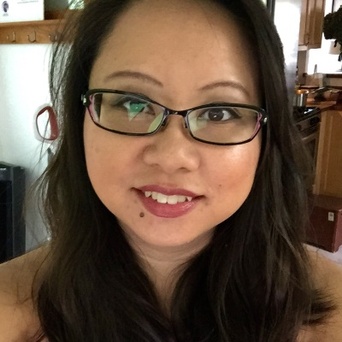 Kaofeng Lee is a Deputy Director of the Safety Net Project at the National Network to End Domestic Violence (NNEDV). Kaofeng advocates on behalf of survivors of interpersonal violence by educating others on how technology can be misused to stalk and harass. She also provides trainings, resources, and other technical assistance to increase the knowledge and capacity of victim’s advocates so they can help those in need. Before joining NNEDV, Kaofeng was a bilingual advocate for a local domestic violence program, edited for a publications and design agency, and provided project management for a top 5 accounting firm, where she learned that listening is most important, the Oxford comma should be king, and obsessing over details is totally okay. Kaofeng has a Masters in International Relations from American University and a Bachelor of Arts in Journalism and Communication from Iowa State University. By Barry Goldstein, See the Triumph Guest Blogger The ACE (Adverse Childhood Experiences) Studies contain medical research from the Centers for Disease Control originally used by doctors to diagnose and treat patients with health problems caused by childhood abuse inflicted decades earlier. The findings have even greater value for prevention and have the ability to transform society in the most joyous and consequential ways. The ACE Research demonstrates that children exposed to domestic violence, child abuse and other traumas will live shorter lives with far more illness and injury. Domestic violence is at the epicenter of adverse childhood experiences. The long-term health risks are caused by living with stress from the fear engendered by abusers. The essence of domestic violence is the fear and intimidation used by domestic abusers to coerce their partners to do what they want. Fathers who abuse mothers are 40-60% more likely to also physically abuse children. Domestic violence is also associated with all of the other ACEs. Preventing domestic violence will therefore dramatically reduce health and safety risks for children thus reducing cancer, heart disease, stroke, mental illness, suicide, substance abuse, crime and many other social problems. Put more positively, the prevention of domestic violence will lead to a healthier, happier and wealthier society where women and children can be safe in their homes. Domestic Violence is Not Inevitable Domestic violence has been dramatically reduced in places like Quincy, Nashville and San Diego by using a group of proven practices. In Quincy, District Attorney Bill Delahunt noticed that virtually every inmate in a nearby high security prison had a childhood history that included domestic violence and often sexual abuse. He believed that if he could prevent domestic violence he could reduce all crime and this is exactly what happened. A county that averaged 5-6 homicides enjoyed several years with no murders. I have updated the successful practices to create the Quincy Solution. The essence of the original responses were strict enforcement of criminal laws, protective orders and probation rules together with practices that made it easier for victims to leave their abusers and a coordinated community response. I have added the new research and technology like GPS that were not available when these communities enjoyed their success. In Quincy, some victims stopped cooperating with prosecutors when their abusers sought custody. This did not derail the success because at the time this was a rare tactic. Today this is a standard abuser tactic. They routinely seek custody as a way to regain control over their victims and undermine domestic violence laws. Accordingly the custody courts must be part of the Quincy Solution and stop allowing abusers to use the courts to gain custody or access to the children. The Safe Child Act which requires courts to make the health and safety of children the first priority in all custody and visitation decisions is part of the Quincy Solution. Huge Financial Benefits for Ending Domestic Violence I have worked in the movement to end domestic violence for over 30 years so I would agree to spend almost any sum to stop hearing the horrific stories. I don’t want to read about the mothers and children killed by abusers or police officers murdered when they try to stop him. I hate the stories of courts ripping children from safe, loving mothers and forcing them to live with abusers and rapists. Most people are less aware of these tragedies and so other issues are given greater priority. For me, the world changed when I read about the health costs related to domestic violence. Previous estimates were limited to the costs of treating the immediate wounds from an assault and believed the cost was $5-8 Billion annually in the United States. The ACE research demonstrates the full costs include the many diseases and social problems caused from the stress of living with an abuser. The full cost is $750 billion. When we also consider crime costs and the loss of economic potential the cost is well over one trillion dollars annually. Based on the success in communities like Quincy, Nashville and San Diego, I believe the best practices would quickly save $500 billion annually and that will be a huge incentive for policy makers to adopt the Quincy Solution. Conclusion Fifty years ago, the U.S. Surgeon General released a report linking cancer and smoking. It was depressing to know that our tolerance and encouragement of smoking led to so many illnesses and deaths and enormous medical costs. Society responded with laws, commercials, taxes, cessation programs and other practices to discourage smoking. As a result smoking has been reduced and this has led to reductions in cancer and heart disease, longer lives and reduced healthcare costs. Behavior that we now refer to as domestic violence and child abuse has been allowed and encouraged for thousands of years. Our present life expectancy and frequency of many common and deadly diseases are based on the existing level of domestic violence and child abuse. Fortuitously the knowledge of the full benefits from preventing abuse occurs just when the Quincy Solution demonstrates our ability to dramatically reduce domestic violence. We have the ability for the first time in human history to make most women and children safe from domestic violence. But just as domestic violence is not inevitable, neither is the Quincy Solution. We need people who care to get involved and make sure this opportunity is not lost. Join the Stop Abuse Campaign and encourage organizations in which you belong to join the coalition. Speak and write to legislators, community leaders, the media and friends about the Quincy Solution and Safe Child Act. Promote a meeting in your community so the public can learn about our ability to prevent domestic violence. I will be traveling around the country to speak about the Quincy Solution and hope organizations will invite me to speak. Together we can have a safer world.  Barry Goldstein is a nationally recognize domestic violence author, speaker and advocate. He is the author of some of the leading books about domestic violence and custody including Domestic Violence, Abuse and Child Custody, co-edited with Dr. Mo Therese Hannah, Representing the Domestic Violence Survivor, co authored with Elizabeth Liu and Scared to Leave Afraid to Stay. His latest book, The Quincy Solution: Stop Domestic Violence and Save $500 Billion demonstrates we have the ability to dramatically reduce domestic violence based on proven practices. 1/22/2015 Moving Away from Blaming the VictimBy Heather Teater, See the Triumph Contributor What was she wearing? Was she drinking? Didn’t she know better than to walk home alone at night? Was she asking for it? What does she do that provokes him to beat her like that? Why doesn’t she stand up for herself? Doesn’t she think about her kids? Why doesn’t she just leave? Whether talking about sexual assault or intimate partner violence, for a long time we, as a society, have been asking the wrong questions. Though our previous efforts have been well-intentioned, they focused too much on potential victims and what they could do to not be assaulted and not enough on potential perpetrators. Recently, however, we have started to see a shift in initiatives designed to prevent sexual assault and domestic violence. These campaigns have moved from asking people to make special efforts to protect themselves to encouraging people not to perpetrate. As individuals, we need to remember to do the same. If you are talking to someone who has been victimized (whether you are a friend, family member, helping professional, or a total stranger) it’s important to remember not to ask the wrong questions. Asking questions about the victim’s role in the situation can insinuate that they are in some way responsible for what happened to them, which only perpetuates victim-blaming. Even in our everyday lives we can change the conversation around these issues. Whether or not you are not having a direct conversation with someone who has been victimized, be aware of the way that you think and talk about sexual assault and intimate partner violence. For example, how do you respond when someone talks about a recent news story regarding domestic violence? Do you join others in asking why the woman who was victimized would ever stay with her husband, or do you steer the conversation toward why her husband became violent in the first place? We need to take responsibility for our own biases and responses to stories about sexual assault and domestic violence before we can expect the rest of society to do the same. When we have our own biases in check, we can move on to initiating, participating in, promoting, and otherwise involving ourselves in campaigns to end domestic violence and sexual assault. We need more initiatives that focus on sending the messages “do not rape” and “do not abuse” rather than “do not let yourself be raped or abused.” We can start by helping such programs get introduced in our own communities. If you’re not sure how to get your own initiative started in your community, there are campaigns in place that already have a focus on educating potential perpetrators and they would love to become involved in your area by providing educational materials, organizing rallies, giving presentations, etc. Some examples of such campaigns are Break the Cycle, Men Can Stop Rape, and A Call to Men, among many others. We can end sexual assault and domestic violence. It starts with changing the conversation our society is having about these issues, asking the right questions, and keeping our focus on those responsible – the perpetrators, not the survivors.  Heather Teater recently completed her Master's degree in Couple and Family Counseling in the Department of Counseling and Educational Development at the University of North Carolina at Greensboro. By Andrew Willis, See the Triumph Guest Blogger The Stop Abuse Campaign is a non-profit corporation that uses cutting edge research to protect children from Adverse Childhood Experiences (ACEs). The ACE Studies from the Centers for Disease Control and Prevention (CDC) were originally directed at medical professionals for diagnosing and treating adults impacted by childhood trauma. We agree with Dr. Vincent Felitti, the lead author of the original ACE study, that the most important use of this research is prevention. The ACE study shows that 67% of American children experience at least one trauma so severe it will permanently impact their health and measurably shorten their lifespan. An environmental toxin that affected a fraction of that population would be banned immediately. The Stop Abuse Campaign is the leading proponent of The Quincy Solution, which uses proven practices that slash domestic violence crime, especially murders. Specifically, the response includes strict enforcement of criminal laws, orders of protection, and probation conditions. The community creates approaches making it easier for women to leave their abusers, and a coordinated community response is adopted. Barry Goldstein has updated the successful practices to create the Quincy Solution by including new research and technologies like GPS. Domestic violence is involved in about half of all child abuse cases. That means we need to rely on other proven tools and policies to protect the rest of our children from ACEs. Most maternal child abuse and maltreatment stems from a failure to bond properly. Sadly, bonding is usually impeded by the mother’s own history of abuse, and its consequences such as mental illness, social isolation, poverty, and drug use. It’s easy to predict which new mothers will struggle with bonding and parenthood, and when offered help to become a better mother, they usually accept it. This is what home visiting programs do, and they have fantastic track records. Stop Abuse Campaign is proud of what we have already accomplished with volunteers and limited contributions. We launched a campaign for implementation of the Quincy Solution and joined the National Coalition Against Domestic Violence (NCADV) in creating a coalition for this. We have responded to a series of child murders in Erie County, New York by developing a plan using The Quincy Solution, home visiting and adult Child Sexual Abuse education to protect children and slash CPS caseloads. In Erie County, we have received support from the County Executive’s office, the local domestic violence and child welfare community, obtained media attention, and are working to gain additional support and funding in order to start full implementation. We have convinced one county to invest more in prevention strategies in one year than the entire state of New York has invested in the last five. Stop Abuse Campaign responded to the Ray Rice and Adrian Peterson cases by partnering with Pro Player Insiders to broadcast radio programs that include former NFL players, players association officials, domestic violence experts, and child abuse advocates. We also are among the most visible organizations advocating for ACE prevention and reduction on the federal and state level. Federally, we are advocating for money for The Quincy Solution demonstration grants, and for an investigation of federal funding for misogynistic “father’s rights” organizations. On a state level, we lobby for elimination of Statutes of Limitations for child sexual abuse, for the Safe Child Act, which makes the health and safety of children the top priority of all custody decisions, and more money for evidence-based maternal home visiting. All of this was accomplished with a dedicated team of volunteers and limited budget. We need funds to continue the campaign, but if we can expand our funding and work with partners to raise as little as one million dollars, we can literally change the world. Fifty years ago, the US Surgeon General issued a report linking smoking and cancer. It was depressing to learn that so many people got sick and died because of our tolerance and encouragement of smoking. But by passing laws, advertising, educating, helping people stop smoking and discourage children from starting, there was a significant reduction in smoking. Thousands of people are living longer, healthier lives. Health costs were reduced. The ACE Study provides a similar opportunity on a larger scale. Stop Abuse Campaign is using proven methods of ACE prevention to transform society in the most wonderful way.  Andrew Willis is CEO and Co-Founder of the Stop Abuse Campaign. He was born in Hong Kong went to school in Great Britain and has not stopped traveling ever since. Following time in the British Army, where he reached the rank of Captain, he has spent his life practicing integrated marketing communications and marketing, mostly for global brands. Andrew has worked in senior leadership positions for McCann Erickson, Ogilvy & Mather, IBM and Publicis and has been responsible for accounts that include IBM, American Express, HP, Citi and the Royal National Institute for the Blind. He has been recognized with both creative and marketing effectiveness awards and has been a frequent speaker at conferences. A survivor of both child sexual abuse and domestic violence, Andrew has dedicated the second half of his life to ending abuse and alleviating the suffering of those involved. 1/15/2015 The Transformative Healing Power of Art By Kelly Moore and Jaimie Stickl, See the Triumph Guest Bloggers Art as a form of communication has been used since the beginning of mankind. Across cultures, art has been used as a tool to express emotion and many have seen it as therapeutic and healing. People who have experienced trauma sometimes find it hard to express or verbalize their feelings. Language can often be limiting when trying to express the magnitude of emotions that are associated with a traumatic event. Art can provide an individual with a safe place to explore the intensity of these emotions while creating a tangible product that can then serve as a catalyst for communication. We here at See the Triumph have started to provide Healing through Art workshops for survivors of intimate partner violence (IPV)/sexual assault and have seen firsthand how art can be a powerful tool in the healing process. In working with survivors, we have come across several individuals who have felt that their voice has been taken away from them or silenced through their experience. We used art as a tool to help them reconnect with that voice and provide a way for them to share their story. We created masks and mandalas, explored broken pottery, made journals, and embellished boxes. While there are hundreds of ways to use art in the healing process, each project we chose was aimed at exploring emotions, expressing experiences, and providing a safe place for survivors to share their story. At the end of the process, some individuals were amazed as they reflected on their artwork and saw how their product often mirrored what was going on for them or how they were feeling, whether they had meant to portray that in their piece or not. As we processed the experience of creating something new, inevitably metaphors came alive. For instance, one project that we did consisted of painting broken pottery pieces and then putting them back together as a whole unit. One survivor commented that the process was so frustrating as her pieces sometimes didn’t seem to fit, fell apart, or she wasn’t sure she liked certain pieces. But after she had put them together and she saw the pot, she realized that the once broken pieces were put back together into a beautiful and unique whole. She saw this as a symbol of her healing process and experiences. Another survivor stated that once she was able to let go of trying to create something perfect, she enjoyed feeling the freedom and release of truly expressing herself in a new way. While these are only a few examples of what we have seen, expressing yourself through art can be an empowering experience. You don’t have to be an artist to explore and experience the healing benefits of art. We are hoping to make the Healing through Art workshops curricula available in the spring to provide ideas of different ways to use art. In the meantime, here is an idea to get you started exploring your inner artist: Create a Visual Journal: Try creating a journal out of an already made children’s board book. You can typically purchase them from a thrift store or used bookstore for under a dollar. Pick a shape and size that you like. Once you have your book, you will want to lightly sandpaper each page on order to remove most of the glossy coating. Next, you’ll be ready to paint a layer or two of gesso primer or white acrylic paint as the foundation. Then, your book is ready to be transformed! Try painting each page a different color – or a variety of colors! We have found that acrylic paints tend to work best on these books. You can also add all kinds of images and words once the paint dries. Some creative ideas to get you started:
Or…pick up a magazine, cut out an image that you like and let your imagination run wild. Or…dig through old photos and re-create your story throughout your journal to create the life you desire. Whatever you decide to do, have fun and be patient with yourself. Keep in mind, you do not need to create a masterpiece, rather this is for you and for your own healing. We’d love to hear about what you create, so please leave a comment below with your own artistic inspiration! 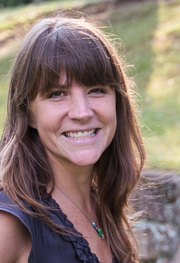 Kelly Moore is a doctoral student in the Counseling and Educational Development department at UNCG. Kelly received her Master’s Degree in Art Therapy from Florida State University and her undergraduate degree in Education from the University of Georgia. Kelly is a Licensed Professional Counselor, National Certified Counselor, and Registered Art Therapist. She has had experience in both inpatient and outpatient settings and was working as a therapist in Asheville, NC before returning to school. Through her work with See the Triumph, Kelly has had the opportunity to co-lead art therapy workshops for individuals who have experienced sexual assault/intimate partner violence. These experiences have solidified her belief that art can be an empowering avenue for survivors to share their stories.  Jaimie Stickl is a doctoral student in the Counseling and Educational Development department at the University of North Carolina at Greensboro. Jaimie received her Master of Arts degree in School and Community counseling from Regent University and her Bachelor of Science degree in Education from Grove City College. Jaimie is a Licensed Professional Counselor, National Certified Counselor, and Professional School Counselor. She was most recently working as a school counselor with Denver Public Schools in Colorado before returning to school to work towards her doctorate. Jaimie has been a co-leader of art therapy groups for individuals who have experienced sexual assault/intimate partner violence. She has truly enjoyed using art as a tool in the healing process and is looking forward to continuing her work with See the Triumph. By Christine Murray, See the Triumph Co-Founder
At See the Triumph, one of our main goals is to end the stigma surrounding intimate partner violence. We’ve heard in our research that this stigma is very real, and it impacts survivors of abuse while they’re in the relationship and can continue long after it ends. We know that this stigma can exist within individuals, families, organizations, communities, and in the society at large. Ending the stigma is a huge task, and we believe that it’s going to take a long-term, concerted effort by a vast network of organizations and individuals working together to really make this happen. Recently, my See the Triumph Co-Founder, Allison Crowe, and I completed a study to learn from a national panel of experts about the changes they believe need to happen in order to fully end the stigma surrounding domestic and sexual violence. We used what’s known as the Delphi research methodology, which uses multiple rounds of surveys with a panel of experts in order to come to a consensus in beliefs about the topic being studied. Due to the confidentiality requirements of the research process, we can’t identify the national leaders who participated in the study. However, we can share that they represented a variety of national advocacy organizations that address domestic and sexual violence. All together, 16 participants took part in at least one of the three surveys included in the research. We asked the participants to share their thoughts on the strategies they believe are most needed to eradicate the stigma surrounding domestic and sexual violence. Our research process then narrowed in on seven strategies that reflected the leaders’ beliefs. These strategies were as follows:
When I think of the large-scale transformation needed to truly end the stigma, I am both excited and intimidated. I’m excited because I know that these changes are possible, and I’ve met so many people doing great work toward this goal. I’m intimidated, however, because I know how big a task lies before us. Transformation can occur in large-scale sea changes, but it also can occur in incremental steps over time. Breaking down large-scale tasks into smaller, more manageable steps usually helps them to become more manageable. With that in mind, I invite you to look back over the 7 strategies suggested by the leaders in our study. What is one small step based on one of the recommendations that you could address right now? I invite you to share your reflections on this list, as well as the steps you take, in the comments below! 1/10/2015 A Snowball of Abuse AwarenessBy Claire Cappetta, See the Triumph Contributor It is that time of year again when everyone wishes people a “Happy New Year.” We start to think about the next twelve months as they stretch out before us, wondering if by the time the New Year rolls around again, any big changes may have happened in our lives. Our thoughts drift to resolutions, most of which are quickly broken within hours, even minutes. If we are really strong we can sometimes, make them last a few days. What changes can we make? What difference, however small, can we bring to this world we live in, our world? Some changes can seem so small, like snowflakes. But those small snowflakes all add up, turning into a pure, white blanket covering the ground. Beautiful, fun, and sometimes difficult. When we become involved in social media it can seem overwhelming to have our voices heard. There are so many people now, all looking to make a difference, which is a good thing, but we can get drowned out in the noise. It is akin to walking into a room, and everyone is talking and few are listening. We need to remember, though, that just like snowflakes, it all adds up. If we keep pushing, talking, singing and dancing, people do stop to listen. January for me is a very special month. It is Stalking Awareness Month. There are too many times when an abused person leaves an abuser, and the abuser then turns to stalking. One in 6 women and 1 in 19 men have experienced stalking in some way, that’s 6.6 million people in the United States alone, according to the Stalking Resource Center’s Statistics for 2014. It’s terrifying to be stalked. There’s a knock at your door, constant phone calls. Your house is under constant surveillance, as are you. A car follows you wherever and whenever you go anywhere. Now with social media, your sites become constantly monitored, and if you are completely unlucky, like I was, there is always the one aspect we dread… The break in or being held hostage. I was lucky I escaped with a lot of emotional baggage, bruises. My PTSD has escalated now, as I was paranoid, as well. The panic attacks, mind crashes, startling at any small noise were all part of my daily life of survival. I owe my life to one best friend, one policeman, and my own efforts to keep my wits about me, while I organized and made changes in my life to escape, to move many miles away. I was told he would kill me if I stayed, and I believed it. Now, I am safe. I have lost a lot, but I have also gained. I lost being able to see my children grow into wonderful people, and I have lost family members. For a long while, I lost trust, friendship, and love. These I have gained back over time. I learned how and who to trust, love and become friends with. I am left feeling that I owe something, and sometimes it’s an overwhelming desire to give back because I am alive. Who do I owe something to? My best friend, of course, but I feel something much deeper too. My stalker was there before the Internet, before emails and social media, with its knowledge and support groups. It was a lonely time, but we can raise our voices on it now. We may not become viral, like fluffy kittens playing on Facebook, but we can be beautiful like snowflakes, collecting together and making a blanket of awareness that people start to notice. January is a busy time for me now. I’m organizing a Stalking Awareness Event in my local area. There will be speakers talking about awareness and safety. A friend will be there teaching line-dancing, and there will be amazing indie-rock songs from another. A local store has already collected two large bags of clothes to donate to survivors to help them get back into the workplace. Our collective need to help people feel safe is now extending more online, with webinars filled with song, dance, talks about survival and what “Finding Our Inner Happiness” is all about. Christmas is when we always think about giving, New Year is for new starts, but maybe if we think about starting anew and giving throughout the year, we can be like snowflakes, amalgamating slowly into something much bigger and more diverse. A Snowball of Abuse Awareness…. Because that’s just how we roll!
By Maxine Browne, See the Triumph Contributor
Healing is a journey. When you’re on the road to healing, it doesn’t feel like you’re getting anywhere. You may feel stuck. But you are moving forward. Trust me. My ex took everything from me. He stripped me of my friends and my family. Then, he separated me from my children. He took my money, my career. He took my sense of self. He told me I was fat, ugly and stupid. He said it, and I believed it. I was brainwashed. Controlled. Silenced. Erased. I became so depressed, I planned my suicide to escape my mental anguish. When I left I was mad. Mad at God. Mad at my ex. But most of all, I was mad at myself. How did I get here? How could I have allowed this to happen? How could I have been so naïve? These questions repeated themselves inside my head during the day and kept me awake at night. If anyone mentioned religion, look out! As a minister’s wife, I blamed God for my suffering. Why hadn’t He protected me? After all the prayer and fasting, begging God to save my marriage, I thought He would part the Red Sea, come into our living room and rescue me. Instead, the minister I was married to cursed me in the name of God, used the congregation to pressure me, quoted Scripture in twisted ways to force outcomes in his favor. He used my faith as a weapon of control. Friends and family asked, “How can you leave the church? How can you blame God?” My answer today would be that this was one phase of my healing journey. It was like a town I passed through on a road trip. I hadn’t moved there. For a season, I cursed like a sailor. I spoke with a sharp tone of voice. I was sarcastic and skeptical of everyone and everything. I had castle walls around me for protection. I rebelled against my supervisors. I struggled, but I kept moving forward. I sought therapy and rebuilt relationships. I created a new life. And with each step forward, I softened. There are many points of view when it comes to forgiveness. Some believe that if you forgive someone who wronged you, it’s as though you’re saying the pain they caused wasn’t that bad. I’ve heard some say that the abusers don’t deserve such kindness and generosity. In my view, forgiveness has nothing to do with the person who hurt you. Forgiveness is about you. I like what Buddha said, “Holding onto anger is like drinking poison and expecting the other person to die.” Unforgiveness poisons you, not them. It traps you in the ugly past. Forgiveness sets you free and allows you to walk away and begin anew. I have forgiven my ex. That doesn’t mean we’re buddies. We don’t hang out together. I have no contact with him, unless I must attend a graduation, wedding or funeral. Trust me, that’s more than enough contact for me. I avoid him, but I’m not angry anymore. I’m not mad at God nor do I blame God for those years. I now understand that He created us all with free will. My ex chose to abuse his authority and not even God could stop him from doing what he wanted to do. I may cuss from time to time, but it’s not the same. I’m at peace. My problems with authority figures have dissolved, and I even married again, something that was unthinkable a few years ago. It’s been a journey. So, you may feel a certain way today. Don’t be hard on yourself. Keep taking steps forward. You’ll be amazed in a few years just how far you’ve come! Happy healing. Maxine Browne Maxine Browne uses her inspirational story as a keynote. She facilitates workshops on domestic violence and healthy relationships. Other workshop topics deal with life after divorce, co-parenting and spiritual abuse. Maxine co-authored the International Best Sellers, The Missing Piece and The Missing Piece in Business. She is the author of Years of Tears, the story of her family’s journey through domestic violence and recovery. Contact Maxine to speak at your next event at [email protected]. Visit her website at www.maxinebrowne.com. Years of Tears is available on Amazon by following this link: http://tinyurl.com/mljqmyn 1/4/2015 Two Years In, and We're Still Just Getting Started: Reflections on Two Years of See the TriumphBy Christine Murray, See the Triumph Co-Founder
New Year’s Day marked the two-year anniversary of See the Triumph. When we launched See the Triumph on January 1, 2013, we were entering into uncharted waters, and looking back, I don’t think we ever could have envisioned the many blessings and challenges we’ve faced along the way...so far. And “so far” is the key--we are proud to reach this two-year milestone, but we know that our work is really just getting started. Our work has just begun because the stigma surrounding intimate partner violence (IPV) is so pervasive. Thankfully, there are many other individuals and organizations working every day to challenge the stigma surrounding IPV: Every time a survivor shares their story with others, whether publicly or in one-on-one conversations, the stigma is challenged. Every time a friend or family member reaches out to help someone they care about who is facing abuse, the stigma is challenged. Every time a community organization holds events or shares resources about domestic violence, the stigma is challenged. And every time a national advocacy organization works on a campaign to raise awareness about domestic violence, the stigma is challenged. We view our work with See the Triumph as part of the fabric of these larger efforts at the local, national, and global levels. We remain committed to an ongoing program of research and advocacy efforts to understand, address, and ultimately end the stigma surrounding IPV. When we first stated See the Triumph, we were focused primarily on disseminating our research. As we’ve grown and built important relationships and connections with survivors, advocates, and others, we’ve come to see the advocacy work as most central to our work with See the Triumph. We first were inspired to create See the Triumph because of the powerful stories we heard from participants in our research. Now that our research has grown to include hundreds of survivors across multiple studies, we continue to be inspired and learn so much from each new participant in our research, as well as from the many survivors, advocates, and others who’ve become part of our See the Triumph community across our various social media platforms. Although we can’t respond individually to everyone who contacts us, we try to respond to as many as we can manage, and we appreciate every kind and supportive person who we’ve heard from who has encouraged us to continue our work. As I reflect on our first two years, and especially on this month’s theme of “Transformative Approaches to Ending Domestic Violence and Abuse,” I remember why we started See the Triumph to begin with. The stigma surrounding IPV is a major problem that has implications for survivors (including while they are in the relationship and afterward), professionals who work with them, and organizations that serve survivors and work to hold offenders accountable. More broadly, the stigma around IPV has detrimental effects for the society as a whole. The costs of IPV on society are high and affect virtually every social system and organization in our communities. The stigma surrounding IPV keeps this issue hidden despite these costs, and it prevents effective responses and preventive efforts from becoming widespread. And, the stigma makes it more difficult for individual survivors to get the support they need to move toward safe, healthy, nonviolent lives and relationships. The further along we’ve gotten with See the Triumph, the more I’m convinced of the need to end the stigma surrounding IPV in order to really transform the way that violence is prevented and addressed in our society. Looking ahead to our third year and beyond, we’re excited to continue building upon what we’ve started these first two years. We have plans for expanding in new directions this coming year, but we also remain committed to the heart of the work we started with--sharing the inspiring stories of strength and triumph that survivors share with us through our research. We hope you’ll continue to share your ideas, successes, challenges, and triumphs with us as we move into our third year with See the Triumph! Your support means so, so much to us. We know the work ahead of us remains large. But we are so thankful to all of you who have supported us, partnered with us, and connected with us around our goal of transforming our society into one that wraps survivors of abuse with support and care and that is free from stigma surrounding IPV and other forms of abuse. |
Archives
July 2024
CategoriesAll About Intimate Partner Violence About Intimate Partner Violence Advocacy Ambassadors Children Churches College Campuses Cultural Issues Domestic Violence Awareness Month Financial Recovery How To Help A Friend Human Rights Human-rights Immigrants International Media Overcoming Past Abuse Overcoming-past-abuse Parenting Prevention Resources For Survivors Safe Relationships Following Abuse Schools Selfcare Self-care Sexual Assault Sexuality Social Justice Social-justice Stigma Supporting Survivors Survivor Quotes Survivor-quotes Survivor Stories Teen Dating Violence Trafficking Transformative-approaches |
Search by typing & pressing enter


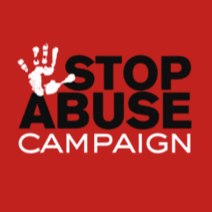

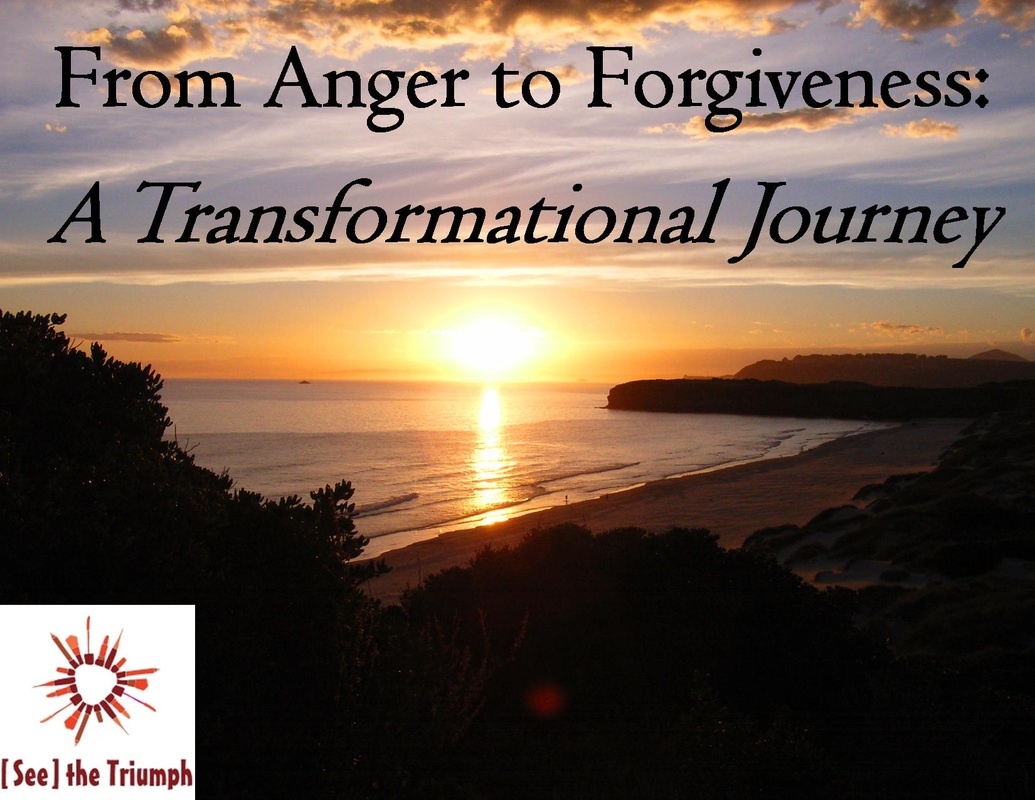

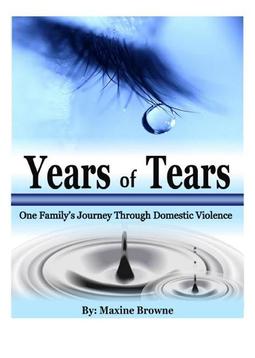

 RSS Feed
RSS Feed